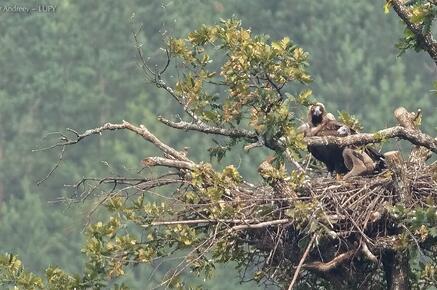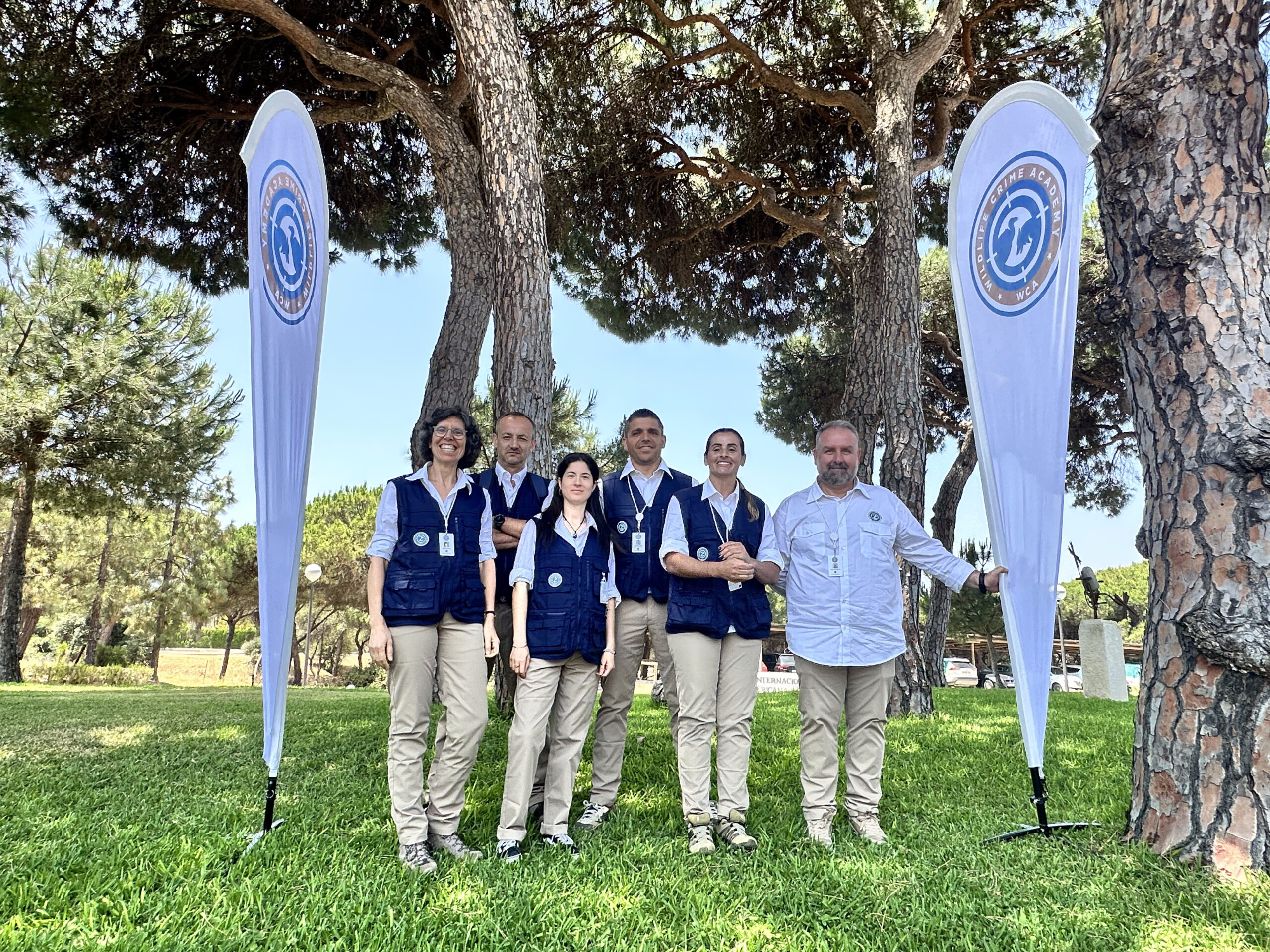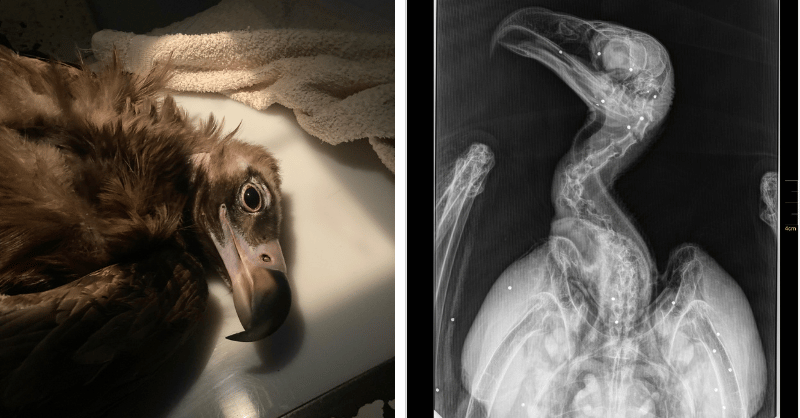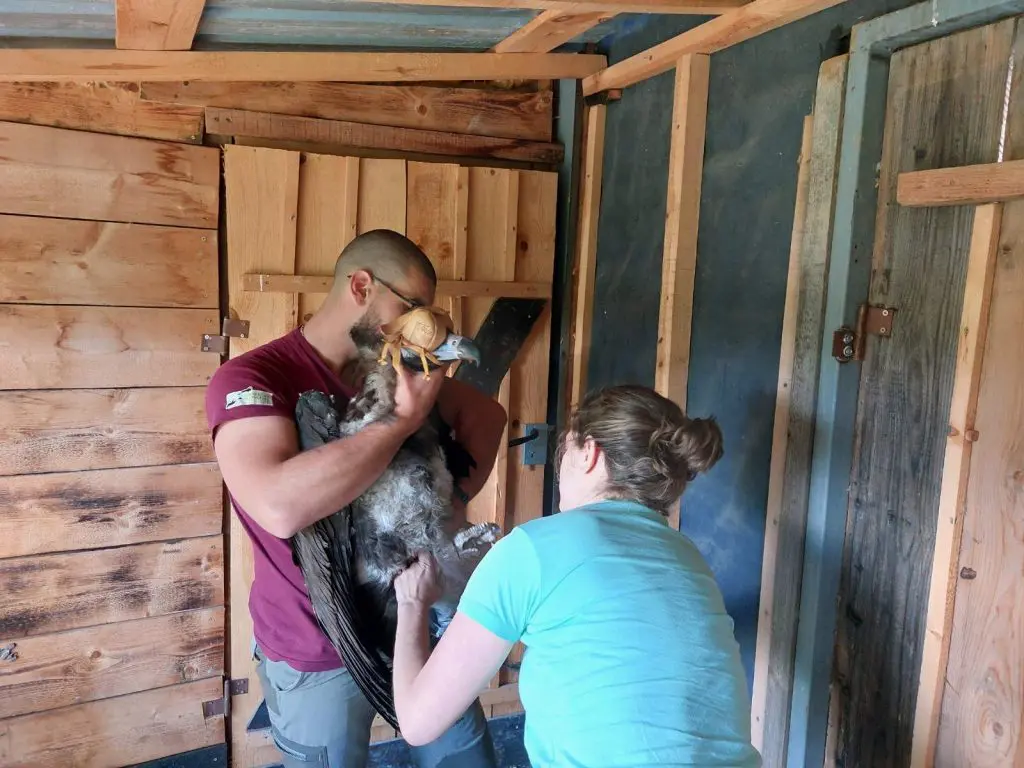The cross-border Cinereous Vulture (Aegypius monachus) breeding colony in the Douro International Nature Park, the most isolated and one of the most fragile in Portugal, now has 14 new artificial nests, in addition to the eight previously installed, totalling 22. The installation of the artificial nests for this endangered species was carried out as part of the LIFE Aegypius Return project – consolidation and expansion of the Cinereous Vulture population in Portugal and western Spain.

The artificial nests were installed in October, in a delicate and difficult intervention carried out by a specialised team from GIAM – Grupo de Intervención en Altura de los Agentes Forestales de la Comunidad de Madrid, from Spain, together with technicians from Palombar – Conservação da Natureza e do Património Rural. The main aim of this action is to make a greater number of nesting platforms available for the Cinereous Vulture to nest and settle in the territory, increasing the recruitment of individuals and consequently this colony, which covers the Douro Internacional Nature Park (PNDI) and the neighbouring Arribes del Duero Nature Park (PNAD) in Spain.
Where were the nests placed and what are they made of?
Nest sites and structures are chosen to mimic the species’ natural nesting process as much as possible. Unlike most vultures, which nest in rocky cliffs, the Cinereous Vulture nests mainly in large trees. The nests have therefore been installed in trees such as juniper, holm oak or cork oak. The nests have a metal structure that mimics the shape of a natural nest and a sturdy net that supports the material used to make the interior more natural, such as small branches and woody shrubs and sheep’s wool. These materials make the nests more welcoming and attractive to the target species.



Nesting in trees is a peculiarity of this vulture that entails risks
Because it nests in trees, the Cinereous Vulture is at increased risk: it is more vulnerable to and affected by forest fires. Precisely for this reason, another line of action of the LIFE Aegypius Return project is to promote habitat management and increase natural resilience to forest fires around the breeding colonies. In 2017, for example, the PNDI colony was affected by a forest fire that destroyed the species’ only nest at the time, killing the little Cinereous Vulture chick.
Cross-border colony has eight nesting pairs
Currently, the Douro Internacional transboundary colony has eight nesting pairs, five in the PNDI and three in the PNAD, which is already a very positive number, given the context and evolution in recent years. However, of these pairs, only five have laid eggs this breeding season and only four chicks (two in each country) have survived to become independent.
Soft release of Cinereous Vultures is another strategy to increase colony size
The Cinereous Vultures only lay one egg per breeding season/year and the offspring only reach sexual maturity at five or six years of age, so their reproductive success is very limited and conditioned. Any incident that causes offspring mortality has a great generational and population impact on this species. For this reason, in addition to building artificial nests, the project will boost the number of individuals in this colony by 2027, by returning 20 Cinereous Vultures from wildlife recovery centres to the wild in this region, after they have undergone a period of acclimatisation (adaptation to the environment) and soft release in the structure specially built for this purpose at PNDI. So far, four Cinereous Vultures have been soft released.
About the project

The LIFE Aegypius return project is co-funded by the European Union’s LIFE Programme and developed by a consortium comprising the following entities: Vulture Conservation Foundation – coordinating organisation -, Palombar – Conservation of Nature and Rural Heritage (co-financed by Viridia – Conservation in Action in this LIFE project), Herdade da Contenda, Portuguese Society for the Study of Birds, League for the Protection of Nature, Faia Brava – Nature Conservation Association), Fundación Naturaleza y Hombre, National Republican Guard and National Association of Rural Owners, Game Management and Biodiversity.




